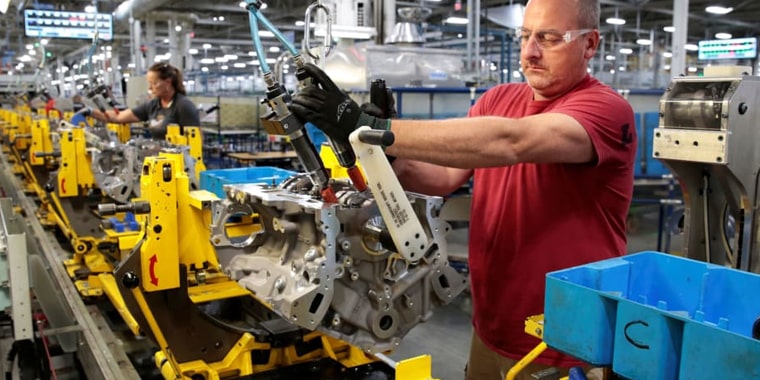
The production routing process is an integral part of manufacturing, and it helps to establish the most efficient method of production.
Routing in production is about formulating a plan in detailed steps, to convert raw materials into finished products.
Production routing establishes the steps needed to produce something, defines operational sequence, and the materials and equipment required to convert raw materials into finished products.
It also mentions the time needed for each task.
Effective product routing helps manufacturers to cut costs, optimize operations, and boost efficiency.
Production is streamlined and quick and wastage is minimal; it also facilitates quality control and ensures consistency, essential for customer satisfaction.
Production routing is also required for maintaining compliance as manufacturers are mandated to adhere to several regulations with regard to safety, sustainability, and quality.
You can also become more flexible by adjusting your production routing strategy to adapt to fluctuating demand, sudden equipment breakdown, or supply chain disruptions.
This will help the business to stay competitive.
ALSO READ: Importance of Capacity Requirement Planning
This shows all the materials, tasks, and equipment to be used in manufacturing; when the material is comprised of several items, a bill of materials is used to determine what items will be required in manufacturing.
It will also show the steps required to produce a finished good.
The routing shows the flow of work, even if they involve outsourcing to external parties for specific tasks.
Routing established the work to be done, how, and where it will be done.
Routing in production planning establishes the optimal sequence of operations to be executed from one machine to another so that manufacturing can be speedy and economical.
It must be continuously refined to achieve optimal supply chains.
ALSO READ: Challenges and Opportunities of AI in Procurement

You must have a list of operations to be performed at specific times, along with the resource to be used to execute it – like a technician, a drill, blade, or level plane.
You have to allocate a specific amount of time to perform the task, after which it should be moved to the next operations.
The routing must have these operations in the right order to complete the manufacturing process correctly.
You have to decide what parts of the product you will manufacture in-house, and what you will buy from external vendors.
These decisions depend on lead time, quality, expertise, cost, etc.
Each component must be assessed to determine the best option.
ALSO READ: Importance of Distribution Management
This is the product recipe, which lists all materials, accessories, sub-assemblies, etc. that are need for manufacturing a product, along with precise quantities of each item needed.
This simply means the specific equipment or manual resource to be used in that operation or task.
For equipment, details like item capacity, and for employees, their skills; the system needs to be provided with such information.
Configuration and breakdown times have to be determined for every work center, so that the appropriate time is assigned.
ALSO READ: ERP vs CRM
This document defines the operational sequence of manufacturing, along with machines and tools to be used, time needed for each, and the employee in charge of every step.
This is the quantity produced in one production run, and is determined on the basis of consumer demand, equipment capacity, and inventory levels.
Cost, lot size, and production efficiency must all be carefully balanced.
Scrap is the material lost in manufacturing, and must be factored in to calculate overall production cost, and determining the lot size.
Material is lost in processes like shaping, cutting, melting, etc.
ALSO READ: What are the Benefits of e-invoicing for your Business?
This refers to the processes that are outsourced to external vendors; you must ensure that they meet your quality standards and stick to the schedule.
Sometimes they may come to your facility to execute the work.
Manufacturers should give all requisite information and forms to the production team to ensure product consistency and standardization.
Manufacturing orders, job and inspection tickets, equipment and tools, orders for moving materials, etc. are required to be communicated.

Several factors can impact the efficacy of the routing procedure, and manufacturers need to keep them in mind, and take action to address them so that costs are low and efficiency is high:
ALSO READ: Common Challenges in Asset Management
ALSO READ: ERP software in Warehouse & Fixed Asset Management
All these personnel collaborate with one another to ensure optimal and economic production processes, and ensure efficiency and productivity, and product quality.

ALSO READ: Key Advantages of Field Service Software

ALSO READ: Features of Accounting Software

As in everything, implementing production routing has its own problems; especially so when it’s a large manufacturing company.
Lack of standardization is a huge challenge as production routing requires collaboration of multiple employees and departments.
In the absence of standardization, you will find no consistency, and several anomalies in production processes that could give rise to mistakes, more expenses, and delays.
Production routing needs accurate data on personnel, equipment, and raw material for every step, and without it, the routing may be incomplete, leading to chaotic production processes.
ALSO READ: Common Project Management Challenges and Solutions
Implementing any new system means your employee have to learn new procedures and methods, and they often resent and resist change.
They may fear change thinking their job security is reduced.
This resistance can cause delayed implementation, leading to poor productivity and higher expenses.
We have already seen that production routing includes multiple individuals and departments; if these departments don’t collaborate there can be several anomalies in production.
It is critical that you encourage all departments and personnel involved to communicate and collaborate so that everyone knows what is happening.
It is essential that you provide adequate training to your employees so that they get familiar with the new system and how it helps in attaining company objectives.
Without training, there can be a lot of confusion and mistakes, leading to expensive delays in production processes.
ALSO READ: Cost Effectiveness Vs Cost Efficiency

Technology is an essential part of developing and managing production routing, as the manufacturing environment of today is complex and fast-paced.
Manufacturing software helps manufacturers streamline and automate production processes like scheduling production, inventory control, and quality control.
It can also help manufacturing companies to develop and manage production routing by offering a centralized platform to plan and monitor the production process.
Automation helps manufacturers to boost efficiency and productivity, enhance quality of products, and decrease costs.
Robots and automated machines can execute labor-intensive, repetitive tasks more efficiently and quickly, freeing human employees to concentrate on complex tasks that add value.
Automation also helps production to be more accurate and consistent, making for high-quality products.
ALSO READ: Emerging HR Trends for 2023 and Beyond
Machine learning leverages algorithms and statistical models to help machines to ‘learn’ from historical data to make more accurate forecasts and identify problems in production that could possibly occur, while optimizing production schedules.
Machine learning algorithms study production data and detect patterns and trends that human beings may overlook.
IoT means a network of interconnected devices and machines; the technology can be used in production routing for keeping a watch on equipment, improve processes, and facilitate real-time decision taking.
Equipment is embedded with IoT sensors that gather data on different aspects of the production process, like inventory levels, machinery performance, and environmental circumstances.
ALSO READ: Benefits of Public Cloud Computing
This is a virtual prototype of an actual system or product, and is used to simulate and enhance processes before real-world deployment.
If they have a digital twin of a specific process, manufacturers can detect latent production issues and test varying scenarios without disturbing production.
Tranquil offers real-time visibility into inventory, assets, and more, delivering valuable insights that helps you take informed decisions for business growth. Schedule a FREE demo at your convenience to know more.